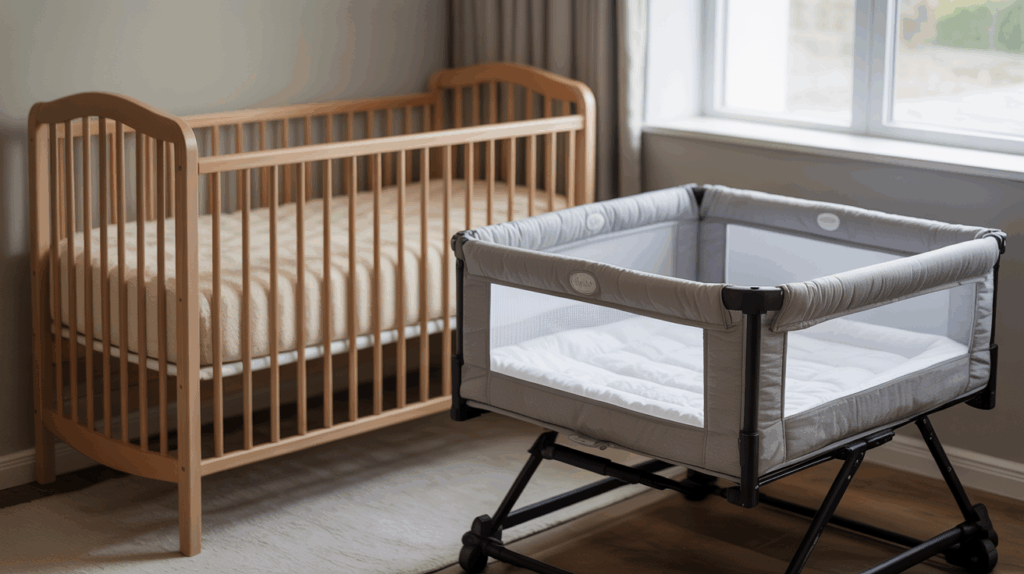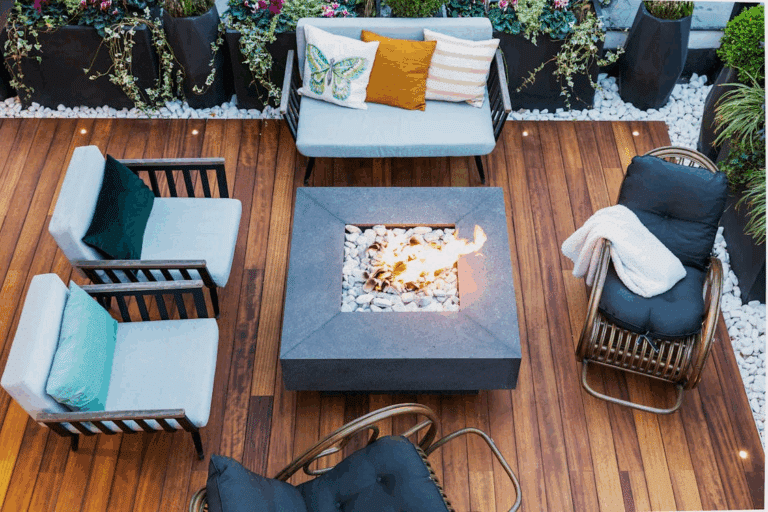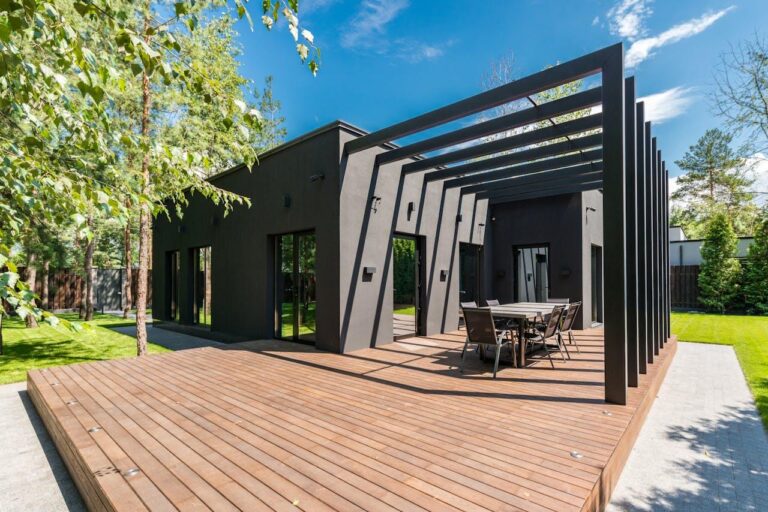Bringing a new baby home comes with so many decisions! One big choice is where your little one will sleep.
Should you go with a traditional crib or opt for the versatility of a pack ‘n play?
Both options have their fans, and each has pros and cons that might make one a better fit for your family’s needs.
In this guide, we’ll break down everything you need to know about these two popular sleep solutions. By the end, you’ll have a clear image of which option makes the most sense for your home, budget, and parenting style.
Understanding the Basics: Pack n Play and Crib
When you’re getting ready for your baby, knowing the difference between pack n play vs crib is really important. Let’s look at what makes each one special.
A crib is a baby bed with four fixed sides and slats. It’s bigger and more solid than a Pack ‘n Play. Cribs stay in one place in your home. They come in different styles and colors to match your room.
A pack ‘n play (also called a playard) is a portable sleep space for babies. It has mesh sides and can fold up. You can move it from room to room or take it when you travel.
Comprehensive Comparison: Pack n Play vs Crib
Trying to decide between pack n play vs crib for your baby? This comparison will help you see the key differences so you can make the best choice for your family.
| Feature | Pack ‘n Play | Crib |
|---|---|---|
| Size | Compact (approx. 40″ x 28″) | Larger (approx. 52″ x 28″) |
| Weight | Lightweight (15–30 lbs) | Heavy (50–100+ lbs) |
| Portability | Foldable, travel-friendly | Stationary, not easily movable |
| Price Range | Budget-friendly ($60–$200) | Higher cost ($120–$500+) |
| Durability | Short-term use (1–2 years) | Long-term use (3–4+ years) |
| Mattress | Thin, firm pad included | Requires separate, thicker mattress |
| Setup | Quick, tool-free assembly | Time-consuming, requires tools |
| Extra Features | May include bassinet, changer, storage pockets | May offer conversion kits, storage drawers |
| Best For | Small spaces, travel, temporary setups | Permanent nursery, long-term use |
Pros and Cons: Pack n Play Vs Crib
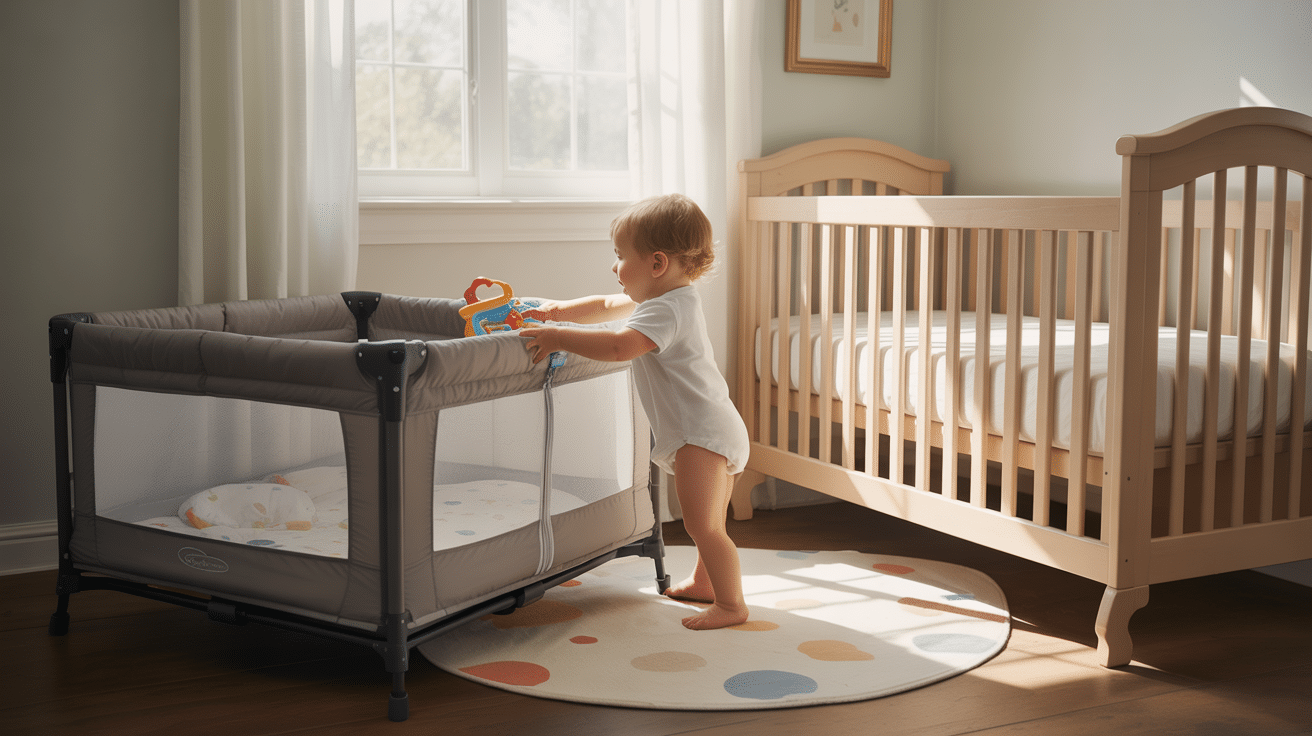
When choosing between pack n play vs cribfor your baby, it helps to look at the good and not-so-good points of each option. Here’s a simple breakdown to help you decide.
Pack ‘n Play Pros and Cons
A lightweight, portable option that works well for travel and small spaces but has some limitations to consider.
Pros:
- Easy to move: You can fold it up and take it to other rooms or on trips
- Saves space: Fits in smaller homes or apartments
- Costs less: Usually cheaper than cribs
- Quick setup: Takes just minutes to set up or take down
- Multi-use: Often comes with changing tables or bassinet attachments
- Good for travel: Provides a familiar sleep spot when away from home
Cons:
- Smaller sleep area: Your baby may outgrow it faster
- Less comfy mattress: Comes with a thinner, firmer pad
- Harder to clean: Mesh sides can trap dirt and be tough to wash
- Lower to ground: It may be harder for parents to put the baby down
- Less sturdy: Not as solid as a traditional crib
- Shorter lifespan: Typically used for 1-2 years only
Crib Pros and Cons
A permanent sleeping solution that offers durability and growth options but requires more space and investment.
Pros:
- More durable: Built to last through multiple children
- Bigger sleep space: Roomier for your growing baby
- Better mattress options: You can choose the best mattress for your baby
- Grows with child: Many convert to toddler beds
- More style choices: Comes in many colors and designs to match your home
Cons:
- Takes up more room: Needs a dedicated space in your home
- Costs more: Higher price point than pack ‘n plays
- Hard to move: Once built, it stays in one place
- Not for travel: You’ll need a second sleep option for trips
- Extra costs: Need to buy a mattress, sheets separately
Both options are safe when used the right way. Your choice really depends on your home size, if you travel a lot, and what fits your budget and needs.
What are the Styles of Pack ‘n Play and Crib?
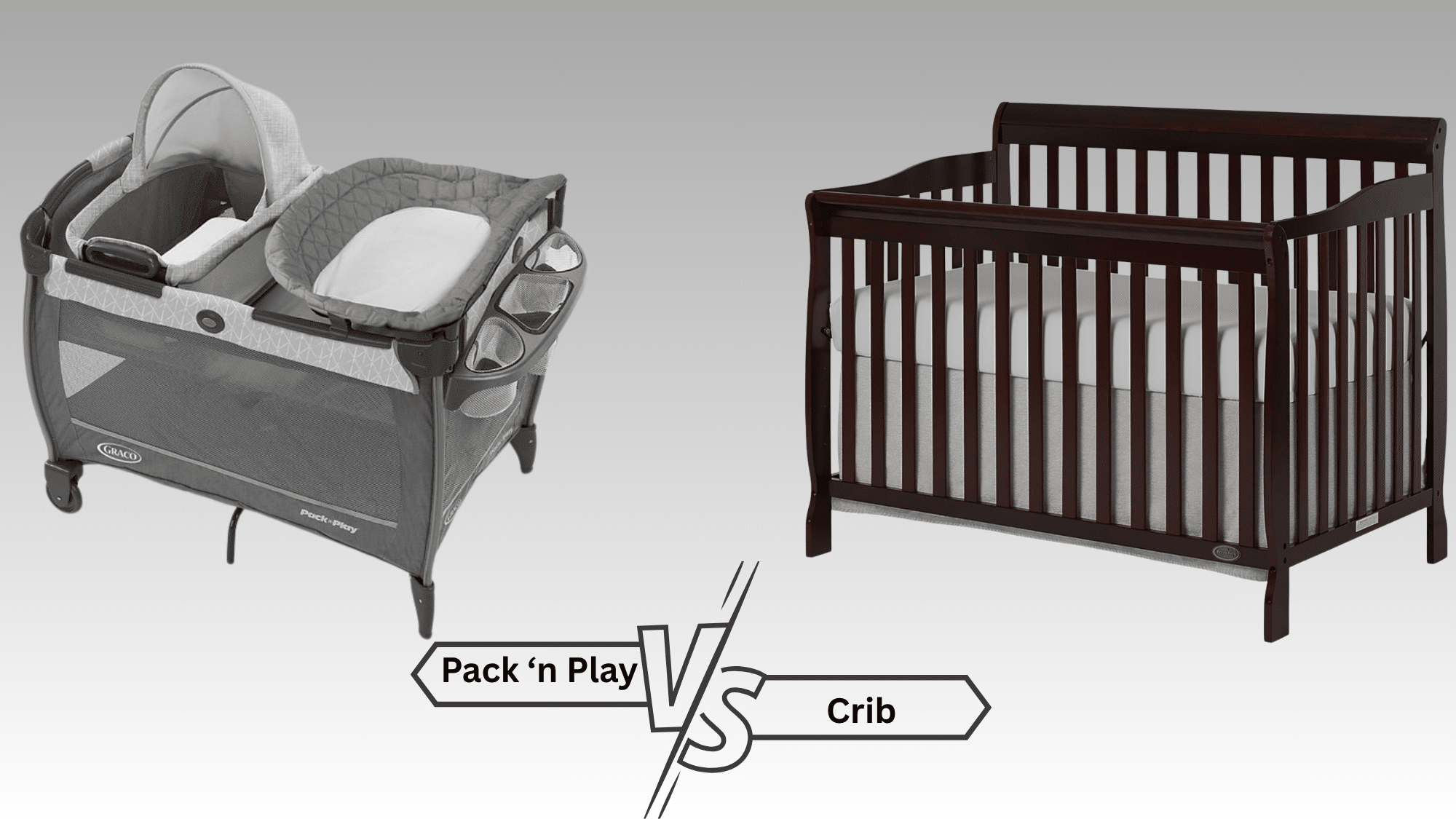
Both pack ‘n plays and cribs come in various styles to fit different needs and home designs. Here’s a look at the main types of each without overwhelming detail.
Pack ‘n Play Styles
1. Basic pack ‘n play – Simple design with mesh sides that fold for storage or travel. Most budget-friendly option with no extra features.
2. Pack ‘n play with bassinet – Includes a raised sleeping area for newborns until they can roll over. Helps parents avoid bending down too far.
3. Pack ‘n play with changing station – Comes with a flip-up changing table attachment that saves space by combining two baby care needs.
4. Deluxe pack ‘n play – All-in-one option with bassinet, changing table, storage pockets, and sometimes music or vibration features.
Crib Styles
1. Standard crib – Basic rectangle shape with fixed sides and slats all around. Simple design at a mid-range price point.
2. Convertible crib – Changes from crib to toddler bed, and sometimes to daybed or full-size bed. Costs more upfront but lasts longer.
3. Mini crib – Smaller than standard cribs, often on wheels. Good for small spaces but babies may outgrow them faster.
4. Crib with storage – Has built-in drawers underneath to keep baby items handy and save nursery space.
Which is Best for Your Kids?
Choosing between a pack n play vs a crib isn’t a one-size-fits-all decision. The best choice depends on your family’s specific needs.
Here’s a simple guide to help you pick what’s right for your baby.
Choose Pack ‘N Play if you have:
- Small spaces – Folds away when not needed
- Travel needs – Portable and familiar for baby anywhere
- Budget limits – Less expensive, no separate mattress needed
- Newborn room-sharing – Fits better in bedrooms than full cribs
Choose Crib if you want:
- Long-term investment – Converts to toddler bed, lasts years
- Multiple children – Sturdy enough for several kids
- Permanent nursery setup – Built for extended daily use
Best of Both Worlds:
- Crib upstairs + Pack ‘n play downstairs = No stair trips for naps
- Many families use both – crib at home, pack ‘n play for travel
Pack ‘n plays win for portability and tight budgets. Cribs win for longevity and multiple children. Most parents find having both works best.
Conclusion
After looking at both options, it’s clear that pack n play vs crib each have their place in a baby’s life. The right choice ultimately depends on your specific situation, including your home size, travel frequency, and budget.
Many families find that having both works best: a sturdy crib in the nursery for regular sleep and a pack ‘n play for travel or naps in other parts of the house.
Trust your parent instincts, you know your family’s needs better than anyone!


